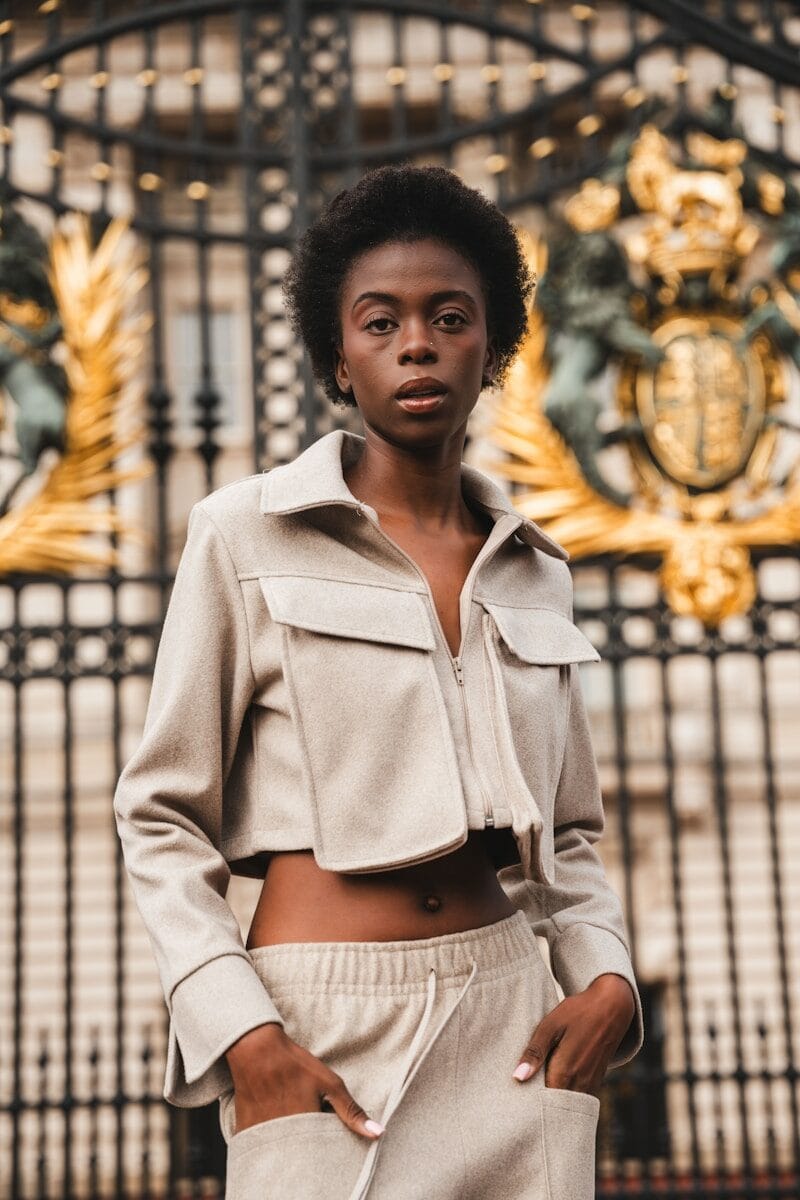Why I Tried to Look Expensive, The Lessons Leaned from My Looking Rich Experiment and What Happened Next
A week-long experiment with 'quiet luxury' style explores the psychology of image, social media pressures and the complex pursuit of authenticity

I stood in front of my bedroom mirror at 7.30am, adjusting the collar of a cream silk blouse I’d bought specifically because it supposedly made me ‘look expensive’. The fabric felt foreign against my skin – too slippery, too precious for someone who usually grabbed whatever was clean from the wardrobe. My reflection stared back, dressed in what online guides promised would signal ‘quiet luxury’, but I felt like I was wearing a costume.
The morning’s outfit choice stemmed from a comment my colleague had made the week before: ‘You always look so… approachable.’ She’d smiled as she said it, but the pause before ‘approachable’ stung. In our image-obsessed world, where 48% of UK consumers are planning to downgrade luxury spending yet still crave the appearance of wealth, ‘approachable’ felt like code for ‘cheap’.
The Pressure to Polish Up
Social media hasn’t helped matters. My Instagram feed overflows with women who seem to effortlessly embody that elusive ‘expensive’ look – neutral tones, minimal jewellery, perfectly messy hair that probably costs £350 to achieve. The ‘old money aesthetic’ has become the new aspiration, promising that if you nail the right combination of simplicity and sophistication, you’ll somehow unlock the respect and opportunities that come with appearing wealthy.
I’d fallen down this rabbit hole after scrolling through endless posts about ‘quiet luxury’ and ‘looking rich on a budget’. The psychological appeal was obvious: if I couldn’t actually afford the lifestyle, perhaps I could at least look the part. The psychology behind luxury consumption runs deeper than mere vanity – it’s tied to how we perceive ourselves and how we want others to perceive us.
My Expensive Experiment
That Tuesday morning marked the beginning of my week-long experiment in dressing ‘expensive’. I’d researched the rules: invest in quality basics, stick to neutral colours, avoid logos, choose tailored fits, and accessorise minimally but meaningfully. Armed with my carefully curated wardrobe additions – the silk blouse, tailored trousers, a structured handbag that cost more than I usually spent on clothes in three months – I set about transforming my appearance.
The first day was a work meeting with senior clients. Usually, I’d wear something comfortable that wouldn’t distract me from the presentation. Instead, I spent twenty minutes choosing between two ‘expensive-looking’ scarves, settling on one that felt like it might strangle me if I turned my head too quickly. Walking into that boardroom, I noticed something shift in the room’s energy. People’s eyes lingered a fraction longer, their handshakes felt firmer, their attention more focused.
But the victory felt hollow. During the presentation, I kept adjusting my blouse, worried about wrinkling the silk. My usual confidence was replaced by a constant awareness of my appearance. Was the scarf sitting right? Did expensive people gesture this much? The clothes were wearing me instead of the other way around.
The Complicated Truth About Looking Rich
By Wednesday, something unexpected happened. A junior colleague approached me after our team meeting, asking for advice about an upcoming presentation. She’d never done this before, and I realised my ‘expensive’ appearance had shifted her perception of my authority. It was simultaneously empowering and deeply unsettling. Fashion can both elevate and constrain us, creating a cage of expectations even as it promises to set us free.
The weekend arrived, and, of course, I faced a new dilemma: my best friend’s birthday drinks. My usual approach would be jeans and something that made me feel comfortable dancing badly to terrible music. Instead, I found myself analysing whether my ‘expensive’ persona could handle such informal fun. Having confidence in your wardrobe choices shouldn’t feel like a prison, yet the experimental wardrobe suddenly felt like exactly that – a prison of respectability.
I chose a middle ground – tailored jeans (apparently expensive people wear these) and a cashmere jumper. At the pub, I noticed I was sitting differently, speaking more carefully, second-guessing my natural reactions. When someone spilled wine near me, my first thought wasn’t sympathy but panic about the cashmere.
The Internal Dialogue
Throughout the week, my internal monologue had become exhausting. ‘Do expensive people laugh this loudly?’ ‘Would someone with money order this from the menu?’ ‘Is my handbag positioned correctly?’ The constant self-monitoring drained energy I usually spent on actual work and relationships.
The psychological weight was unexpected. I’d thought appearing more polished would boost my confidence, but instead, I felt like I was playing a character whose motivation I didn’t fully understand. Social media often trains us into certain behaviours without us realising how much we’re being influenced. The authenticity I’d always valued seemed at odds with this new persona, creating a tension I hadn’t anticipated.
What I Actually Learned
By Friday, I was questioning everything. The ‘expensive’ look had definitely changed how people responded to me – there was more respect, more attention, more assumption of competence. But this is London. These reactions felt conditional, based on surface appearances rather than actual capability or character. I’d gained social capital by conforming to specific aesthetic standards, which felt both powerful and profoundly superficial.
The most unsettling realisation was how much mental energy I’d devoted to maintaining this appearance. Every outfit required strategic thinking, every social interaction became filtered through the lens of ‘what would an expensive person do?’ The cognitive load was enormous, leaving less bandwidth for creativity, spontaneity and genuine connection.
The following Monday, I stood in front of the same mirror, but this time I chose clothes that felt like me – not cheap, not expensive, just mine. The relief was immediate. My shoulders relaxed, my breathing deepened, and I felt ready to focus on substance rather than surface.
Living with the Contradiction
Weeks later, I’m still processing the experiment. The sad truth is that appearing ‘expensive’ did open doors and command respect in ways my usual appearance hadn’t. This reality sits uncomfortably alongside my belief that we should be judged on merit rather than material presentation. Learning to walk tall when others want you to shrink is a constant balancing act, particularly for women navigating professional and social expectations.
I’ve kept some elements from that week – better tailoring does make me feel more confident, and I’ve learned the power of thoughtful dressing. But I’ve rejected the constant performance, the exhausting self-monitoring and the pressure to maintain an image that doesn’t reflect who I actually am.
The experiment taught me that looking ‘expensive’ isn’t really about money – it’s about conforming to specific cultural signals about class, taste and worthiness. These signals have real power in our society, which is both useful information and troubling commentary on our values.
I still catch myself sometimes, standing in front of that mirror, wondering if today requires the expensive version of myself. The pressure hasn’t disappeared, but now I’m more conscious of when I’m choosing performance over authenticity. Sometimes I still choose performance – we all navigate systems that reward certain appearances – but at least now I know I’m doing it, and why.
The real insight wasn’t about fashion or psychology or social status. It was about recognising the ongoing negotiation between who we are and who the world expects us to be, and finding ways to honour both without losing ourselves completely in the process.
Perhaps the key to feeling glamorous isn’t about looking expensive at all, but about finding your own version of everyday elegance – one that doesn’t require you to sacrifice your authentic self at the altar of appearances.




